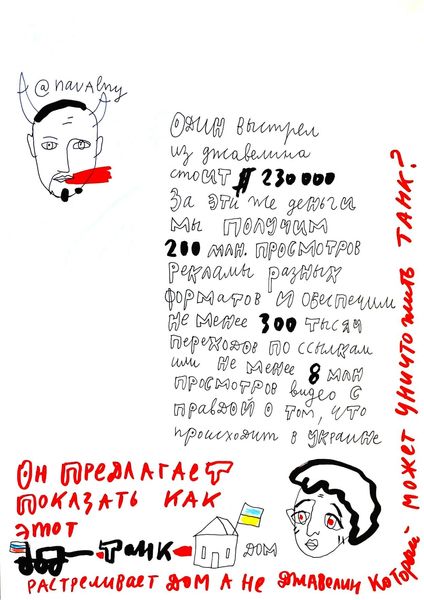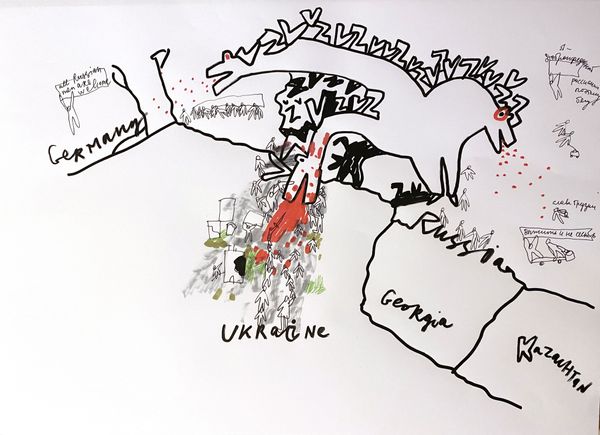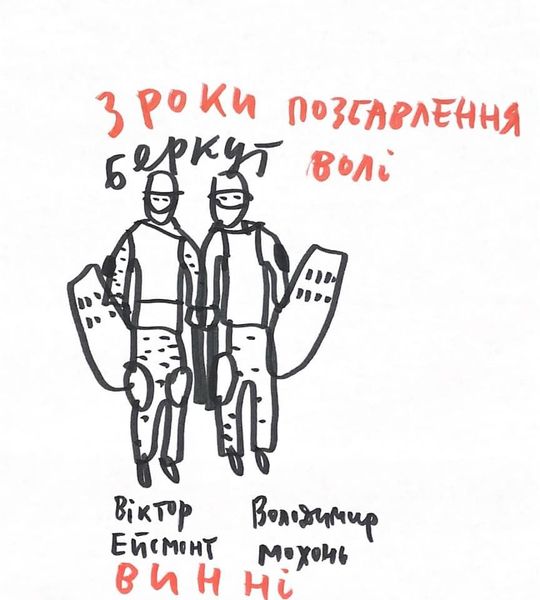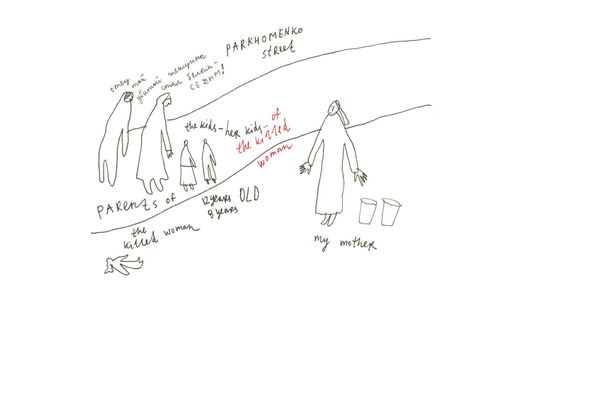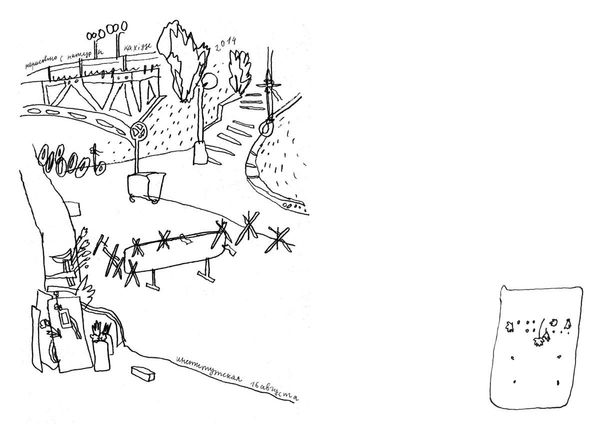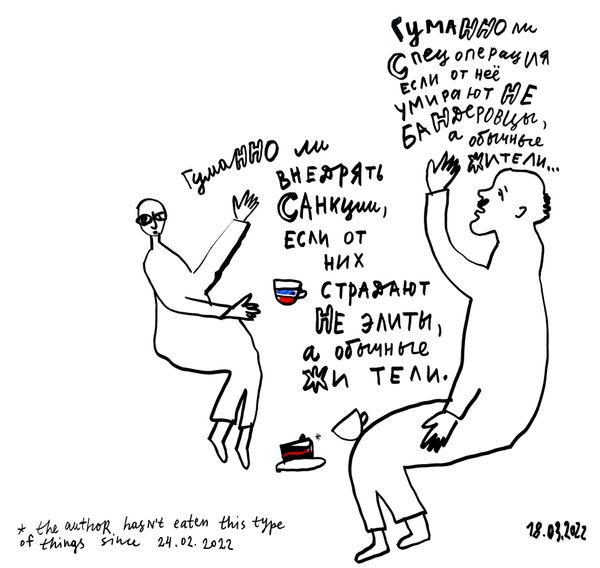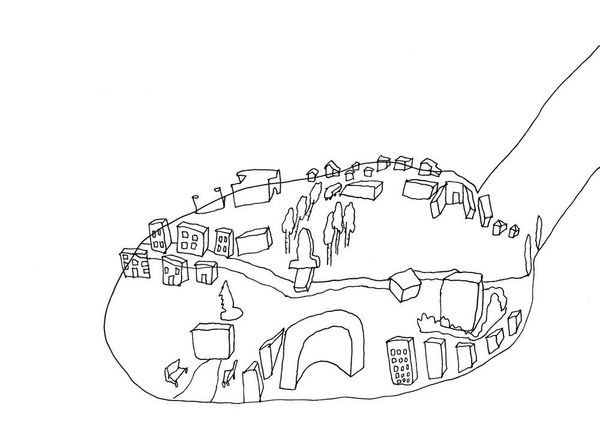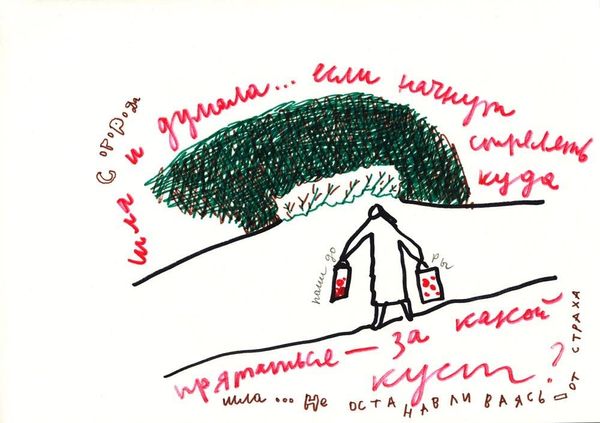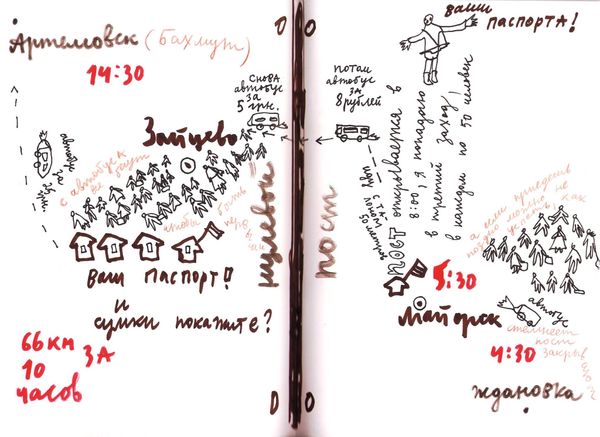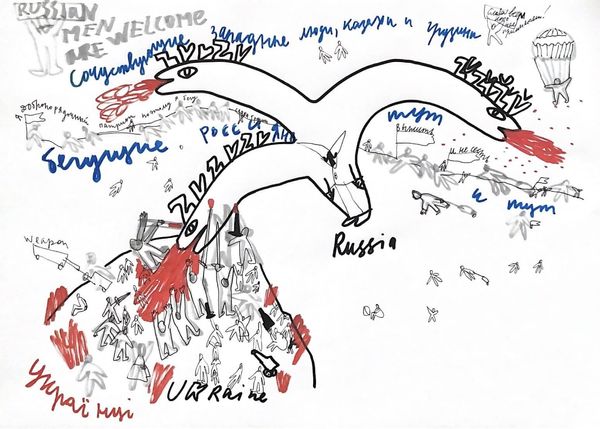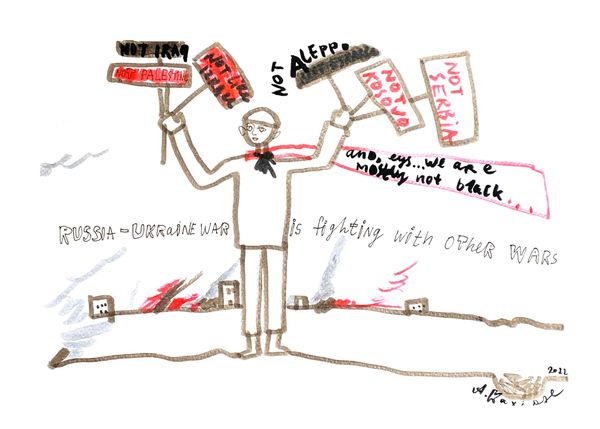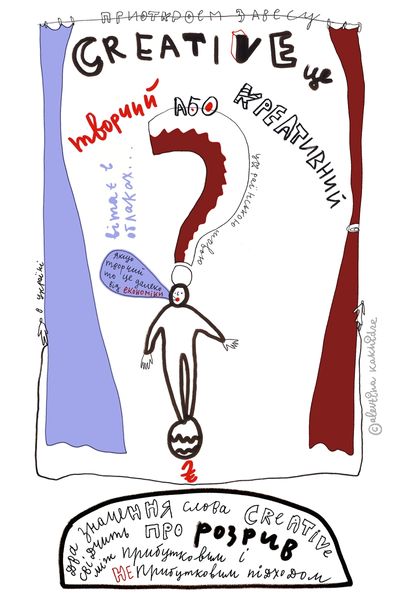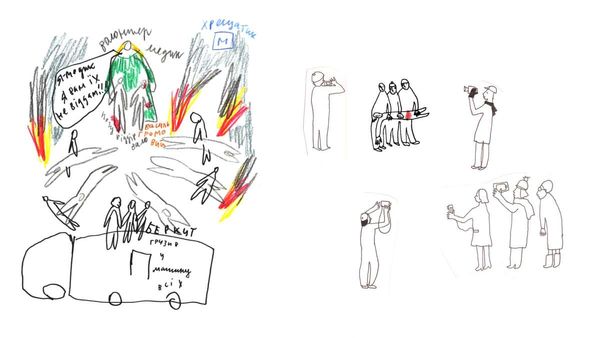
drawing, paper, ink
#
drawing
#
contemporary
#
brush pen line
#
hand-lettering
#
narrative-art
#
playful lettering
#
hand drawn type
#
landscape
#
hand lettering
#
line drawing coloured
#
figuration
#
paper
#
ink
#
hand-drawn typeface
#
fading type
#
line
#
handwritten font
#
small lettering
Copyright: Alevtyna Kakhidze,Fair Use
Curator: Alevtyna Kakhidze, a contemporary Ukrainian artist, made this piece in 2017. It’s called "Untitled. Strawberry Andreevna," created using ink on paper. Editor: It looks almost like a child's map, a whimsical but unsettling depiction, perhaps of movement and displacement. Curator: That childlike quality might be intentional. Kakhidze often engages with socio-political issues, and this work, rendered in a seemingly innocent style, belies the serious context. Notice how place names are scattered across the paper, connected by dotted lines, little groups of figures congregating near some of them. Editor: The lettering itself has such personality – "Bakhmut" written in large, flowing script compared to the smaller, neater "Konstantinovka". It adds an almost diary-like intimacy, making it personal, like a visual note. What can you tell me about the flags on top? Curator: Those simple flag drawings, positioned almost like markers on a battlefield, really caught my eye too. Given the timeframe, 2017, and Kakhidze's Ukrainian identity, these flags might symbolize a contested border or regions impacted by the ongoing conflict in eastern Ukraine. Flags operate as powerful shorthand for larger sociopolitical realities. Editor: So, it's not just a journey but potentially a forced migration route then, mapped out in such a fragile way. And the splashes of red ink... they're concentrated near place names like "Zaitsevo" and "Maiorsk," giving them greater presence on the page, as if they’re more dangerous or heavily affected. Curator: Absolutely, those red annotations do seem to act as visual warnings, punctuating points of tension along the depicted path. What resonates is how Kakhidze uses such simple forms – hand-drawn figures, handwritten text – to convey complex issues of identity, displacement, and political struggle. The informality invites us closer, making it hard to look away. It prompts one to remember those figures are more than scribbles, those regions, more than mere notations. Editor: The starkness of the ink, and paper lends a haunting effect, doesn't it? Despite the work's seemingly basic style, it sticks with you. There is great potency in its pared down execution. Curator: Indeed. By layering personal mark-making onto the political landscape, Kakhidze effectively gives a voice to the often-unseen human cost of geopolitical conflict. It's a powerful example of how art can function as both a record and a form of silent protest.
Comments
No comments
Be the first to comment and join the conversation on the ultimate creative platform.
